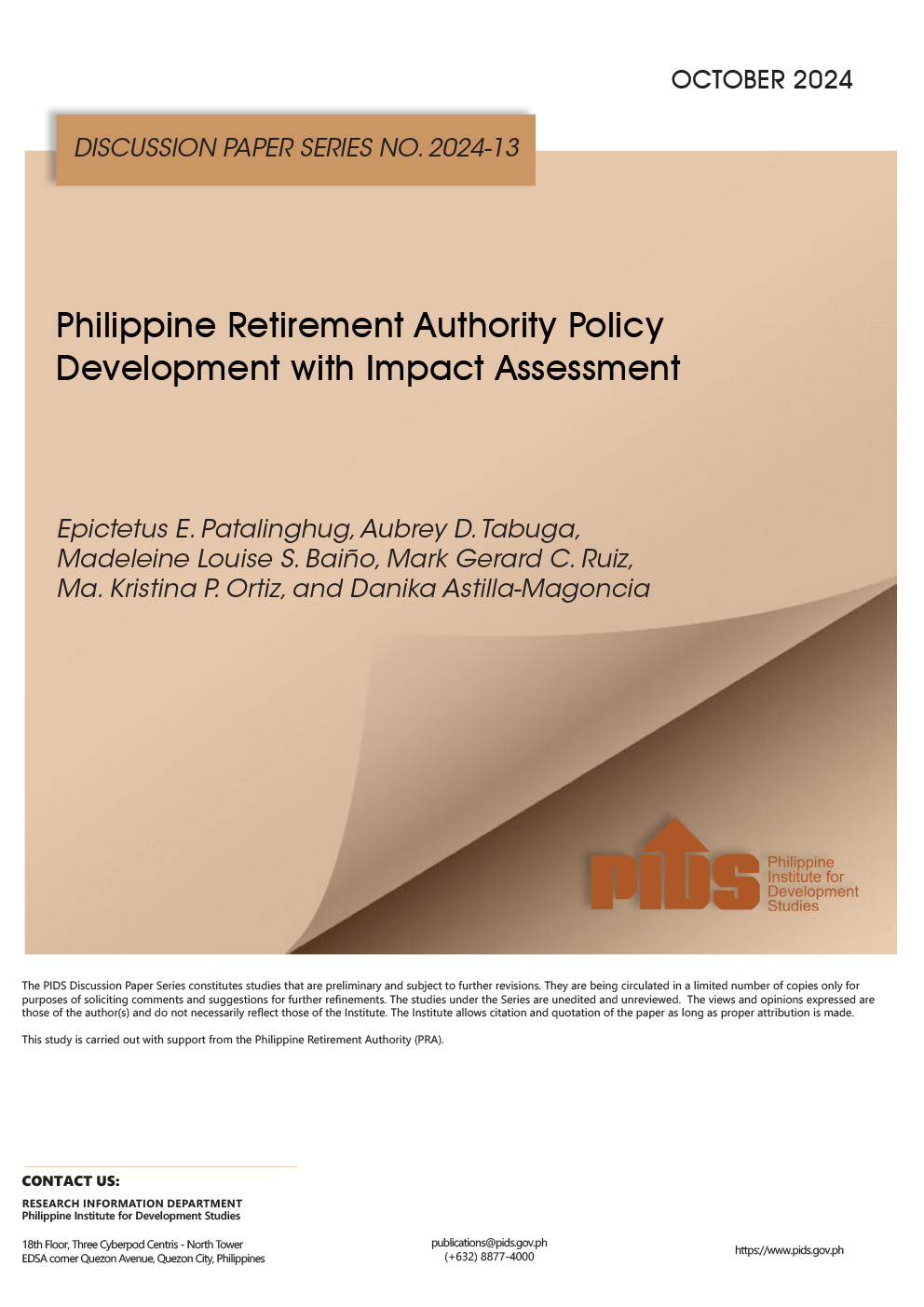The Philippines may suffer a staggering ₱276.3 billion and ₱2.5 trillion economic loss from the coronavirus pandemic, according to the government think tank Philippine Institute for Development Studies (PIDS).
In their study “Projected Disease Transmission, Health System Requirements, and Macroeconomic Impacts of the Coronavirus Disease 2019 (COVID-19) in the Philippines”, PIDS said the manufacturing sector is the worst hit sector with estimated ₱82.1 to ₱855.2 billion in losses.
Other badly hurt sectors include the wholesale and retail trade (₱93.2 to ₱724.8 billion); transport, storage, and communication because of expected declines in tourism (₱11.7 to ₱124.3 billion), and other services (₱41.5 to ₱356.9 billion).
According to the study, simulation models showed the country’s gross value added may decline between ₱123.5 billion to ₱2.5 trillion.
It also noted that extending the Luzon-wide enhanced community quarantine (ECQ) for another month “may potentially cost the Philippine economy at least ₱150 billion due to the possible declines in household consumption as workers remain unemployed” during this period.
Based on the distribution of household incomes in 2015 alone, PIDS said that about three in every five Filipinos have limited capacity to subsist without additional sup¬port if community quarantines are extended beyond one month.
The contraction of economies as a result of the pandemic will also limit the capacity of overseas Filipino workers to send remittances to their families.
The COVID-19 outbreak has already caused a significant decline in the price of crude oil in the first quarter of 2020 as countries began to impose extreme measures (i.e., lockdowns and cross-border closures) to stop the spread of the disease.
Similarly, the stock market has been dwindling, which is considered as an indication of a diminishing market confidence. The study cautioned that “if this current trend continues, it may directly impact the country’s prospects for export growth in the near term.”
It also warned of the negative effects of disruptions in both local and global supply chains, particularly “in the delivery of final goods for consumption and the production of other goods and services that rely on intermediate inputs.”
As one of its recommendations, the study urged the government to undertake a “gradual and calibrated transition to a risk-based strategy that combines relaxation of economic restriction while con-trolling the spread of the virus”.
Specifically, it enjoined the deployment of a massive safety net program to ensure that households have access to food and other basic necessities, adding that “interventions must not only be confined to the poor, displaced workers and other at-risk population but also to firms, particularly micro-, small-and medium-sized enterprises.”
The study also recommended promoting economic activity while strictly implementing safety protocols. One of the proposals is to tap businesses in the government’s intervention efforts against COVID-19 (e.g., garments factories to produce PPEs, distilleries to alcohol production, etc.). It added that “other businesses may need to be developed (e.g., research, digital platform deliveries, manufacturing, etc.) to supply goods and services that cannot be readily sourced from the international market.
In their study “Projected Disease Transmission, Health System Requirements, and Macroeconomic Impacts of the Coronavirus Disease 2019 (COVID-19) in the Philippines”, PIDS said the manufacturing sector is the worst hit sector with estimated ₱82.1 to ₱855.2 billion in losses.
Other badly hurt sectors include the wholesale and retail trade (₱93.2 to ₱724.8 billion); transport, storage, and communication because of expected declines in tourism (₱11.7 to ₱124.3 billion), and other services (₱41.5 to ₱356.9 billion).
According to the study, simulation models showed the country’s gross value added may decline between ₱123.5 billion to ₱2.5 trillion.
It also noted that extending the Luzon-wide enhanced community quarantine (ECQ) for another month “may potentially cost the Philippine economy at least ₱150 billion due to the possible declines in household consumption as workers remain unemployed” during this period.
Based on the distribution of household incomes in 2015 alone, PIDS said that about three in every five Filipinos have limited capacity to subsist without additional sup¬port if community quarantines are extended beyond one month.
The contraction of economies as a result of the pandemic will also limit the capacity of overseas Filipino workers to send remittances to their families.
The COVID-19 outbreak has already caused a significant decline in the price of crude oil in the first quarter of 2020 as countries began to impose extreme measures (i.e., lockdowns and cross-border closures) to stop the spread of the disease.
Similarly, the stock market has been dwindling, which is considered as an indication of a diminishing market confidence. The study cautioned that “if this current trend continues, it may directly impact the country’s prospects for export growth in the near term.”
It also warned of the negative effects of disruptions in both local and global supply chains, particularly “in the delivery of final goods for consumption and the production of other goods and services that rely on intermediate inputs.”
As one of its recommendations, the study urged the government to undertake a “gradual and calibrated transition to a risk-based strategy that combines relaxation of economic restriction while con-trolling the spread of the virus”.
Specifically, it enjoined the deployment of a massive safety net program to ensure that households have access to food and other basic necessities, adding that “interventions must not only be confined to the poor, displaced workers and other at-risk population but also to firms, particularly micro-, small-and medium-sized enterprises.”
The study also recommended promoting economic activity while strictly implementing safety protocols. One of the proposals is to tap businesses in the government’s intervention efforts against COVID-19 (e.g., garments factories to produce PPEs, distilleries to alcohol production, etc.). It added that “other businesses may need to be developed (e.g., research, digital platform deliveries, manufacturing, etc.) to supply goods and services that cannot be readily sourced from the international market.












